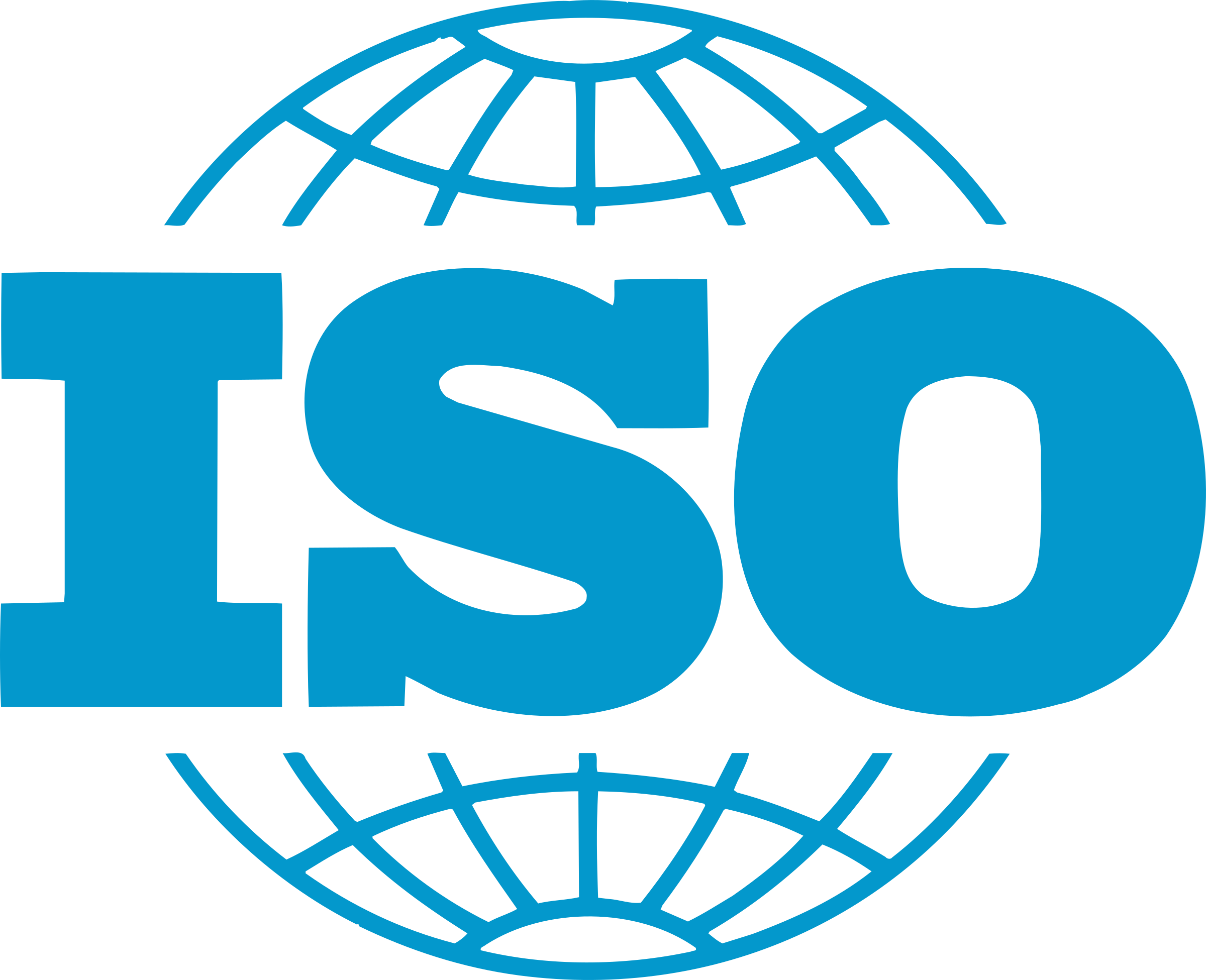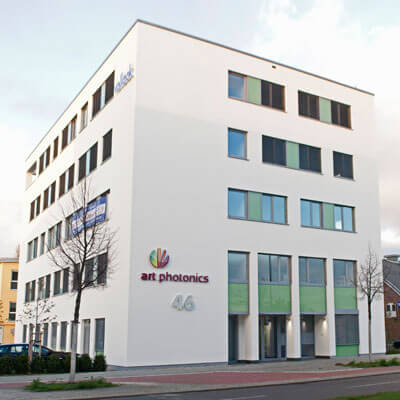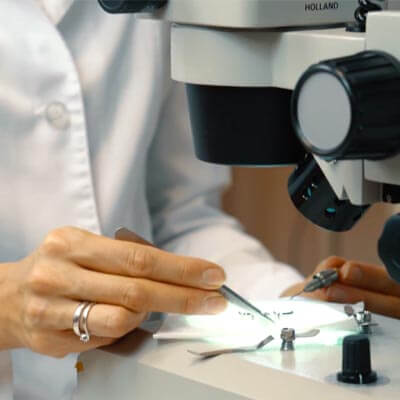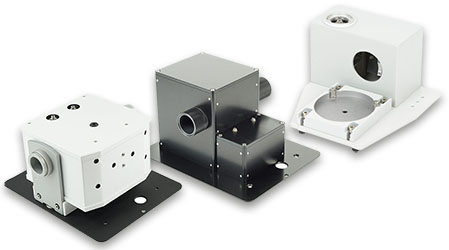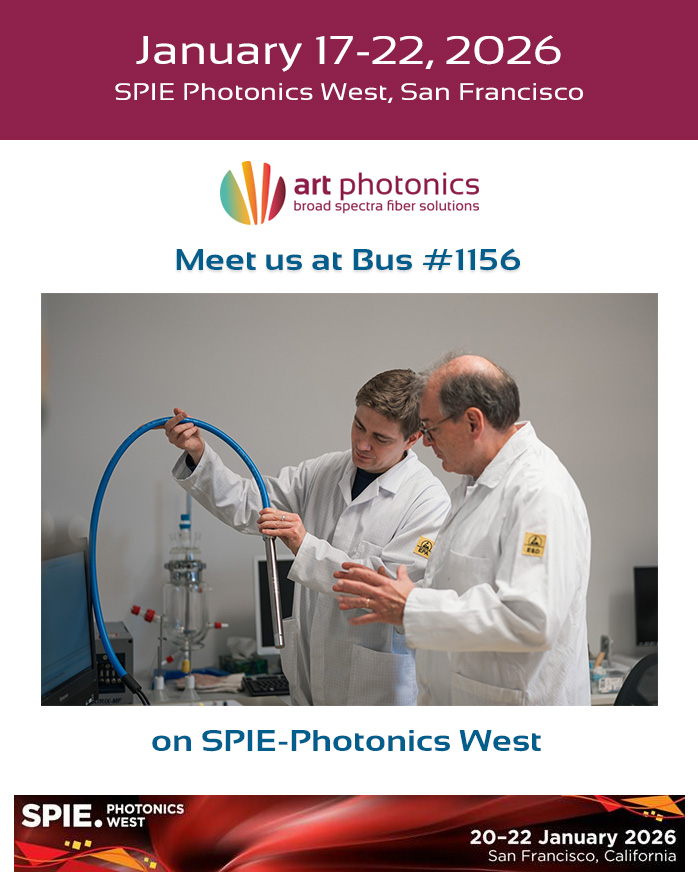Believe it or not, Christmas 2025 is fast approaching. For many, the holiday season is synonymous with traditional markets and the comfort of a hot cup of mulled wine. However, there is a genuine scientific reason why you should never let your Glühwein boil, and it goes beyond simple culinary advice.
In our latest Application Note, we decided to take a festive approach to Process Analytics. Using our fiber-based MIR spectroscopy probes , we conducted an experiment to observe exactly what happens chemically when mulled wine is heated, providing a clear visual representation of why temperature control is critical.
The Secret to the Perfect Cup
Our experiment highlighted two distinct outcomes based on temperature regulation:
1. The Sweet Spot (72°C – 73°C) This is not an arbitrary range. According to gastronomy rules, the optimal drinking temperature for mulled wine sits between 72°C and 73°C. At this specific thermal point, the aromas develop most effectively, yet the liquid remains just below the boiling point of ethanol. This ensures the flavor profile is maximized without losing the alcohol content that defines the beverage.
2. The Overheated Result (90°C) To demonstrate the risks of overheating, we pushed the temperature of the sample up to 90°C and maintained it for approximately two hours. Continuous monitoring with our Diamond ATR fiber optic probe revealed that the characteristic spectral peaks of ethanol completely vanished. By the end of the experiment, the spectral signature of the "wine" had transformed to resemble that of simple grape juice, dominated entirely by sugar compounds rather than alcohol.
Real-Time Monitoring in Action
While this serves as a lighthearted seasonal example, it perfectly demonstrates the serious capabilities of fiber-coupled MIR spectroscopy. The ability to monitor thermally induced chemical changes in real-time is a powerful tool for process control.
Whether ensuring the quality of a holiday beverage or managing critical parameters in pharmaceutical and bio-fermentation processes, our Diamond ATR fiber optic probes provide the necessary in situ analysis to maintain product integrity.
We invite you to read the full details of this experiment and view the resulting spectral data in our new Application Note.
Download the Application Note below:
Is your process spectrometer giving you the full picture? For engineers working in process control and Process Analytical Technology (PAT), the quality and reliability of real-time data are paramount. While the spectrometer itself is the core of the system, its performance often hinges on a component that can be easily overlooked: the optical fiber.
The secret to accurate, repeatable measurements often lies within this critical link. Different chemical or bioprocess applications have unique demands, requiring specific fibers designed for distinct wavelength ranges, operating temperatures, and challenging environmental conditions. Selecting the wrong fiber can lead to signal loss, inaccurate readings, and ultimately, a lack of confidence in your process data.
A Guide to Specialty Fibers for Process Spectroscopy
To help you navigate these choices, art photonics has published a new Technical Note, "Optical fibers for Fiber-based Process Spectroscopy and other applications." This guide provides a clear overview of specialty optical fibers to help you match the right technology to your specific measurement needs.
Below is a brief overview of the key fiber types covered in the note:
- Silica Fibers: As the most common type of optical fiber, silica fibers are a versatile choice for many applications. They are typically divided into two main categories based on their hydroxyl group (OH) content. High-OH fibers are excellent for the UV-Vis spectrum (180 nm to 1200 nm), while low-OH fibers provide excellent transmission in the Vis-NIR range (400 nm to 2400 nm). Protective coatings like polyimide allow for operating temperatures up to +300°C, while specialized metal coatings can withstand up to +600°C in non-oxidizing atmospheres.
- Polycrystalline Infra-Red (PIR) Fibers: When your analysis moves into the mid-infrared region, PIR fibers are an ideal solution. They are particularly well-suited for creating flexible Attenuated Total Reflectance (ATR) spectroscopy probes used for real-time chemical reaction monitoring and bioprocess control.
- Hollow Waveguides (HWG): For applications requiring high-power laser delivery or transmission in the far-infrared spectrum, Hollow Waveguides offer a unique advantage. They are a perfect option for transmitting IR light in the 3 to 17 μm range, enabling advanced applications in gas sensing and other specialized spectroscopic measurements.
Find the Perfect Solution for Your Process
Choosing the right fiber is a critical step in designing a robust and reliable PAT system. By understanding the fundamentals of each fiber type, you can ensure you are getting the most accurate and valuable data possible from your process.
We encourage you to read our new Technical Note to learn more. If you have questions or a specific process challenge, our expert technical sales team is ready to help. Contact us today, and we will work with you to find the perfect fiber optic solution for your application.
We extend our sincere thanks to all who attended our recent webinar, "Selecting the Right Fiber Optic Probe for your Application." The event was met with a great response, and the insightful questions from our live attendees underscored that choosing the best tool for spectroscopic analysis remains a key challenge for many scientists and engineers.
For those who were unable to join the live session, or for attendees who wish to review the material, we are pleased to make the full recording available on-demand.
This practical guide provides a clear framework for making confident and effective decisions when analyzing a wide range of samples, including liquids, solids, and gases. The session covers:
- Probe technology and its selection: A systematic approach to matching the right probe to your specific analytical goal.
- Environmental considerations: A review of key factors for ensuring robust measurements, especially for process control in challenging environments.
- A systematic approach: Guidance on how to confidently match the right probe to your goal, ensuring data accuracy and reliability.
You can access the full recording now to master your probe selection by visiting the link below:
https://mailchi.mp/artphotonics/webinar-share
We thank all participants again for their valuable contributions. If the session sparks any questions regarding your unique process or application, please do not hesitate to reach out to our sales and technical teams. We are here to help you succeed.
What is the real cost of an off-spec batch? In many chemical processes, the precise ratio of components like methanol and ethanol can be the difference between profit and loss. Relying on slow, manual lab sampling means you are often reacting to problems long after they occur, rather than preventing them.
This is where direct, in-line process monitoring becomes essential for maintaining quality and efficiency. But how do you get accurate, real-time data from inside a reactor or pipe, especially in a demanding industrial environment?
The answer lies in robust fiber-optic probes. They act as a direct window into your process, using the power of Near-Infrared (NIR) spectroscopy to provide instant feedback on your product's composition. This technology allows you to:
- Monitor Continuously: Get a live, uninterrupted view of your mixture's composition without ever needing to pull a sample.
- Improve Process Control: Make immediate adjustments to maintain optimal conditions, ensuring consistent product quality from start to finish.
- Increase Safety and Efficiency: Eliminate the need for manual sampling, reducing operator exposure to chemicals and saving valuable time and resources.
Our new application note demonstrates this principle in action. It details how our transflection fiber probe achieves highly accurate, simultaneous determination of ethanol and methanol in an aqueous solution. The results confirm that this method is more than sufficient for the majority of practical industrial applications.
This research highlights the shift from reactive lab analysis to proactive, in-line process control. To explore the full methodology, validation statistics, and results, we invite you to read the complete Application Note.
How do you ensure rapid and reliable polymer identification in your process?
Near-infrared (NIR) spectroscopy is a powerful, non-destructive technology for quality control, recycling, and in-line monitoring. But with various compact spectrometers on the market, choosing the right one for your specific setup is critical.
Our new application note offers a direct performance comparison, using our Diffuse Reflectance Fiber Probe to analyze six common polymers. We investigated different spectroscopic methods to provide clear, actionable insights.
Key takeaways from our study:
Clear Discrimination: Both Fabry-Pérot and grating-based spectrometers can successfully discriminate between all six polymer classes.
Bulk vs. Granule: We found improved class separation in bulk measurements due to the averaging of scattering effects, a key consideration for in-situ analysis.
Performance Differences: While the Fabry-Pérot based spectrometer provided better class resolution in a simpler model, the grating-based system is often faster and better suited for rapid process control.
This research proves the feasibility of using compact spectrometers with fiber probes for robust polymer analysis.
Get the full data and determine the optimal setup for your application by reading the complete Application Note!
In modern chemical and biotechnological industries, the ability to accurately monitor process streams in real-time is crucial for optimizing efficiency, ensuring quality, and maintaining safety. Traditional methods like chromatography, while precise, often involve time-consuming sample extraction and offline analysis, creating delays in process control. A more effective solution lies in bringing the analysis directly to the process line.
Our latest application note demonstrates a powerful method for achieving this: using a fiber-optic Attenuated Total Reflection (ATR) probe for in-line Mid-Infrared (Mid-IR) spectroscopy.
The Power of the Molecular Fingerprint
The Mid-Infrared spectral region is often called the "molecular fingerprint" region because it contains unique absorption features corresponding to the fundamental vibrations of molecules. This allows for highly specific identification and quantification. Even molecules with similar structures, such as ethanol and methanol, exhibit distinct spectral signatures in this range, making it possible to differentiate and measure them accurately within a mixture.
Overcoming the Challenge of Liquid Analysis
Directly analyzing liquids, especially aqueous solutions, with traditional infrared spectroscopy can be challenging due to the strong absorption of water. This is where our fiber-optic ATR probe technology provides a significant advantage. The ATR technique allows for measurements to be taken directly within the liquid sample, regardless of its opacity or high absorption. By bringing the analysis directly into the process fluid, it enables continuous, real-time monitoring without the need for sampling or complex sample preparation.
A Case Study: Quantifying Ethanol and Methanol
In our study, we focused on simultaneously quantifying ethanol and methanol in a two-component aqueous solution. By connecting a diamond ATR fiber-optic probe to an FTIR spectrometer, we developed a robust calibration model. The results demonstrated exceptionally high accuracy, with a root mean square error of prediction below 0.15% for both alcohols.
This high level of precision highlights the suitability of the technology for demanding industrial applications, including the control of distillation processes. The use of fiber optics adds another layer of flexibility, allowing the spectrometer to be placed in a safe control room while the robust probe is integrated directly into the production pipeline.
This combination of Mid-IR spectroscopy and fiber-optic ATR probes provides a robust, accurate, and efficient solution for real-time process monitoring. It empowers industries to move beyond delayed, sample-based analysis and embrace continuous, in-line process control.
For a detailed look at the methodology and results, download our full application note.
art photonics GmbH is proud to announce a significant addition to our portfolio: the new FlexiRay® Square-Core Silica Laser Cable, engineered to enhance the performance and efficiency of diode laser light transmission.
While traditional round-core fibers have long been the industry standard, an increasing number of advanced applications demand a more specialized solution for beam shaping and power distribution. Our new FlexiRay® cables address these challenges by delivering capabilities that conventional round fibers cannot match.
Key advantages include:
- Homogeneous Power Distribution: The square core geometry produces a highly uniform beam profile, which is critical for applications requiring consistent energy density.
- Enhanced Coupling Efficiency: Power transfer from diode lasers and to square detectors is significantly improved, minimizing loss and maximizing system performance.
- High Durability: These cables are designed to operate reliably in demanding environments, with a wide temperature range of -40°C to +130°C.
Built for reliability, FlexiRay® cables are terminated with D80 or HP-SMA connectors. Each connector features an integrated key, ensuring repeatable and secure alignment to maintain optimal performance. The entire assembly is protected by robust tubing, making it suitable for demanding medical, industrial, and scientific systems.
Recognizing that every application is unique, art photonics offers full customization for the FlexiRay® line. The fiber structure and overall cable configuration can be tailored to meet your specific project requirements.
If you are facing challenges with laser transmission or beam shaping, our team is ready to help. Contact us today to discuss your application and discover how our square-core fiber technology can provide the perfect solution.
We are thrilled to share some truly exciting news that gets to the very heart of who we are at art photonics. Our founder, Dr. Viacheslav Artyushenko, is being celebrated on the cover of MagnateView Magazine in a feature story titled, "A Visionary Path in Fiber Optics."
For anyone who knows the history of specialty fiber optics, Viacheslav’s name is synonymous with the pioneering spirit that defines our company. The article beautifully captures his journey, highlighting his groundbreaking work with Polycrystalline Infrared (PIR) fibers—a technology that opened up a new frontier in the infrared spectrum and laid the groundwork for our broad UV to Mid-IR product range.
Dr. Artyushenko’s core mission was always to transform cutting-edge science into commercial products and solutions. This foundational principle is what drove the development of our first advanced fiber optic applications for industrial process-control, environmental monitoring, and bio-medical technology. It is this legacy of turning brilliant research into tangible, real-world tools that he has gifted to us all.
This powerful foundation is not just a chapter in our history—it is the launchpad for our future. Today, under the leadership of our CEO, Dr. Stefanie Foerster, we are more committed than ever to realizing our vision: to be the preferred industry partner and a global leader in fiber optic solutions. Anchored in our strategic location in Adlershof and powered by our international research network, we continue to build upon Viacheslav's work, connecting people, intelligence, and technologies.
We couldn’t be prouder to see his dedication and impact recognized on such a prominent stage. His life's work is a testament to our ultimate goal of improving lives worldwide by bringing light to the forefront of analysis and treatment. Congratulations, Viacheslav, on this wonderful and well-deserved honor!
We invite you to delve into his inspiring story by reading the full article.
Read the full feature in MagnateView Magazine here.
art photonics is looking for a Senior Product Line Manager to join our team in Berlin.
As a key member of our company, you will:
- Develop and execute the product strategy for our leading-edge fiber optics.
- Act as the crucial interface between R&D, sales, and our global customers.
- Drive innovation and profitability with a direct reporting line to the CEO.
You should have a proven track record in technical product management and be fluent in both German and English.
If this sounds like the right challenge for you, we invite you to learn more and apply via the full job description linked here.
Summer Sale – special prices for a limited time!
art photonics GmbH invites researchers, process engineers, and OEM developers to take advantage of our exclusive summer promotion. For a short period, selected specialty fiber-optic products are available from stock at substantially reduced prices.
What is included:
- High-Performance Silica Fiber Cables (190 nm – 2500 nm)
The ideal backbone for UV-Vis-NIR spectroscopy and other analytical instruments where low loss and excellent signal stability are essential.
- Specialty Mid-IR Fiber Cables (3 µm – 18 µm)
Our proprietary polycrystalline infrared (PIR) and chalcogenide fibers open the full molecular-fingerprint region for advanced chemical analysis and material characterization.
- FlexiSpec® Fiber-Optic Probes
Robust ATR, Reflection, and Transflection Probes for in-situ or remote measurements in reactors, pipelines, and other hard-to-reach environments.
Important: stock is limited and products will be supplied on a first-come, first-served basis.
Browse the current stock lists and place your order!
Secure your high-performance spectroscopy tools today and stay ahead in research, process control, and system integration. For quotations or technical advice, please contact our sales team at sales@artphotonics.com.
